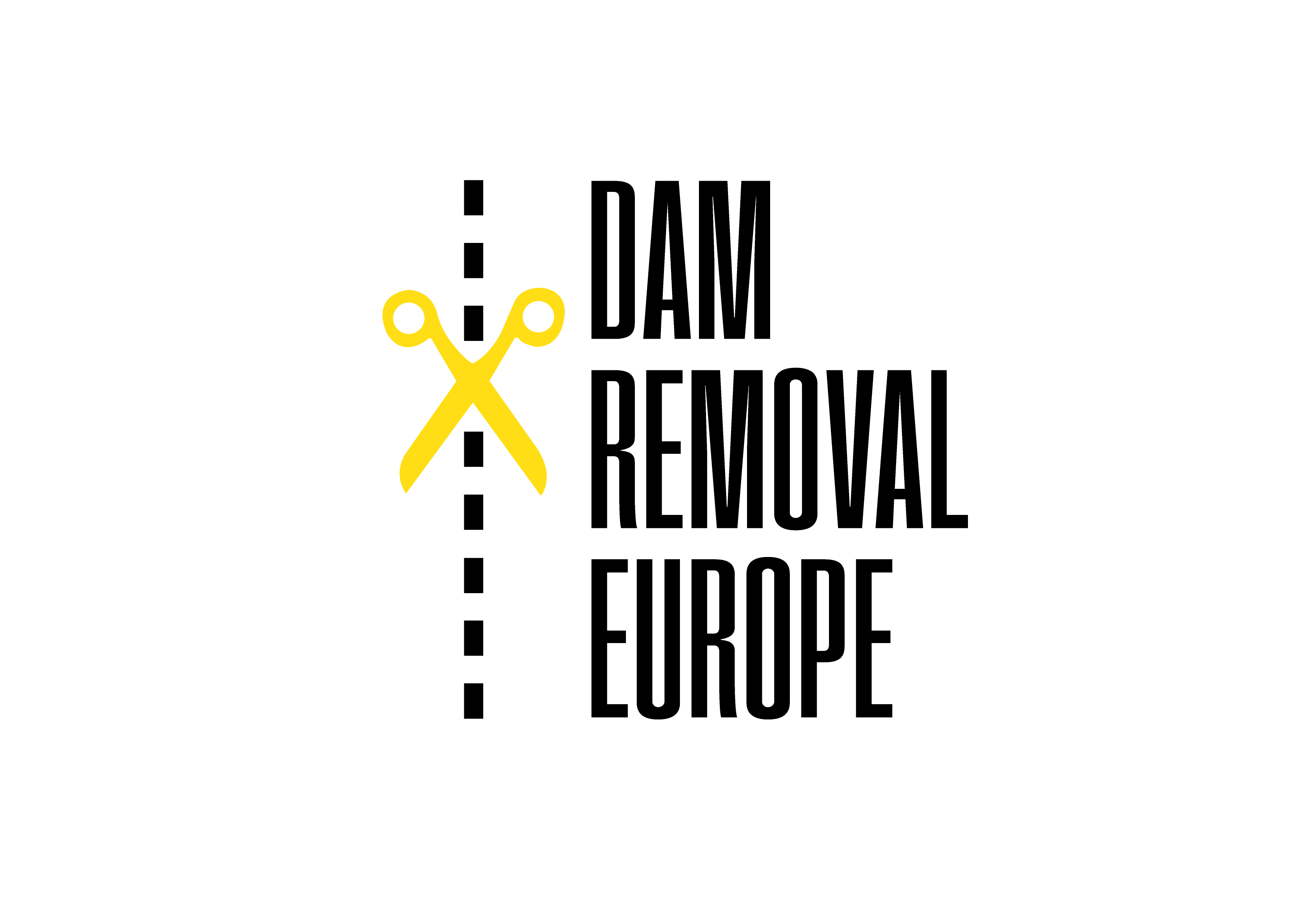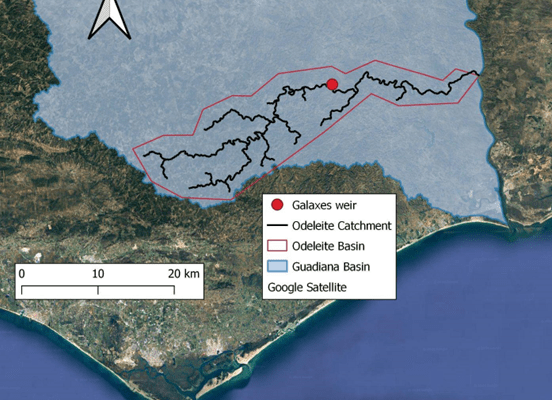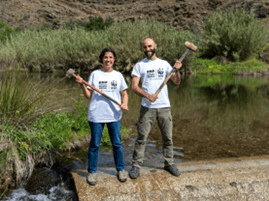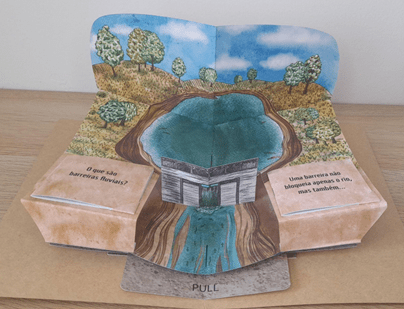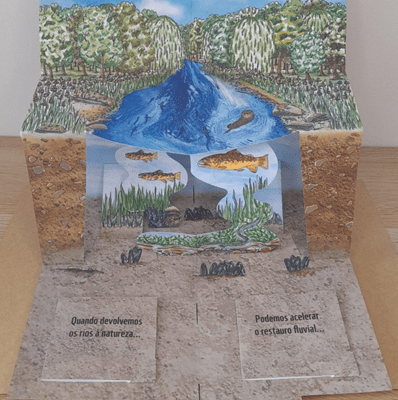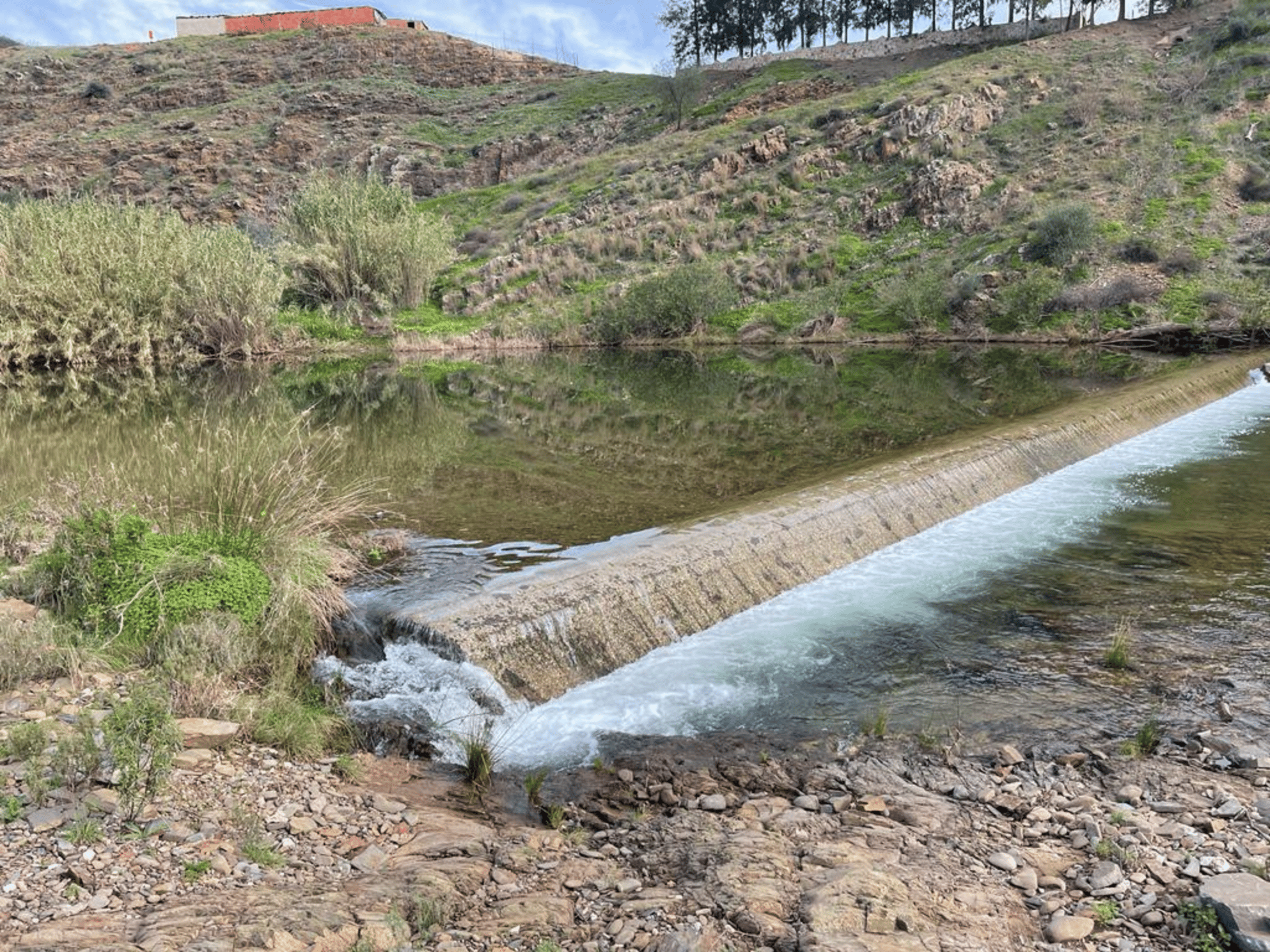Galaxes Weir demolition, the first NGO-led barrier removal in Portugal
The River Odeleite
The River Odeleite, also known as Ribeira de Odeleite, is a tributary of the Guadiana River, located in the Algarve region in southern Portugal (Figures 1-2). It partially lies within the Caldeirão Site of Community Importance (SCI) and is located close to a protected area and a Ramsar site. The river is approximately 65 km long, originating in the Serra do Caldeirão, a mountain in the Algarve region, and flows into the River Guadiana, near the town of Castro Marim. The upper reaches of the river are characterized by hilly terrain and Mediterranean vegetation. As it flows southeast, it traverses agricultural lands and small villages. Near its confluence with the River Guadiana, the landscape features broader valleys and the Odeleite Reservoir. The reservoir is also known as the “Blue Dragon River”, due to its serpentine shape when viewed from above. This reservoir is a crucial water source for the arid Algarve region, supporting irrigation and water supply. The River Guadiana has several other tributaries, including the Foupana, Vascão and Beliche rivers. The latter has a reservoir, formed by the Beliche Dam, which is used to manage water resources in the region (irrigation and water supply). The River Guadiana landscape is characterized by typical Mediterranean vegetation, including cork oak forests, olive groves, and shrubland.
